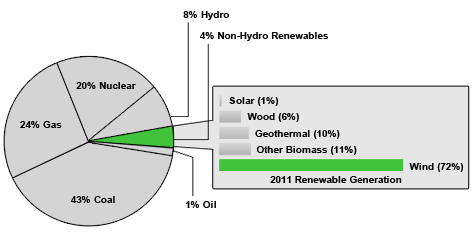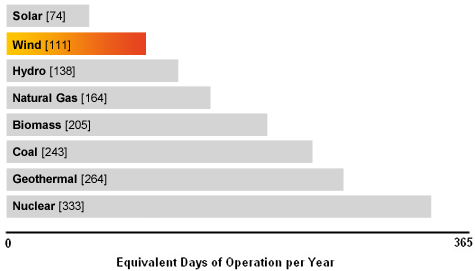Wind energy is one of the fastest growing electricity generation options. In the past four years, for example, wind energy accounted for more than 35% of all new generating capacity in the United States. In many countries, wind energy can take advantage of favorable tax treatment and/or price adjustments to support greater commercialization. These mechanisms have been instrumental in advancing wind energy and in driving cost reductions.
The relatively low construction costs and lack of emissions from wind turbines make it an attractive renewable energy resource, especially in areas with strong wind patterns. The primary disadvantage associated with wind energy is the variability of the wind resource itself. Wind speeds tend to peak at times when energy demand is lower, which means that a certain amount of other generating capacity must be available to fill in if the wind is not blowing.
Offshore wind energy is gaining traction in some countries because of several unique advantages. Wind speeds increase at greater heights and winds are generally stronger at sea than on land. In addition, whereas land-based wind plants tend to produce peak power over night and during low demand times of year, the wind at sea is more uniform.
Where Does Electricity Come From?

What Plants are Used the Most?
